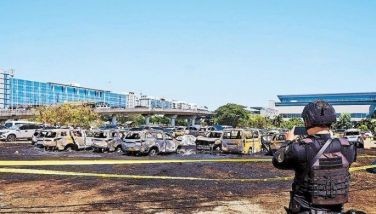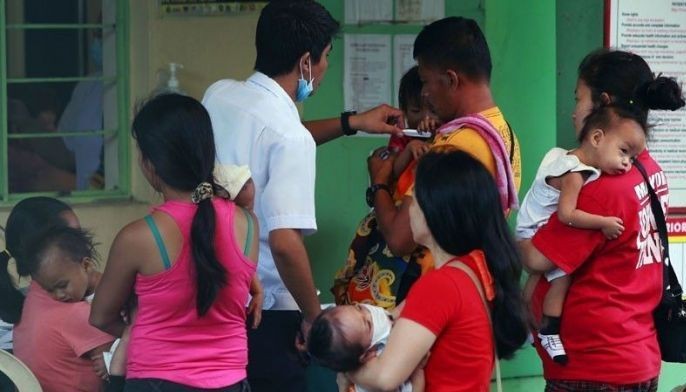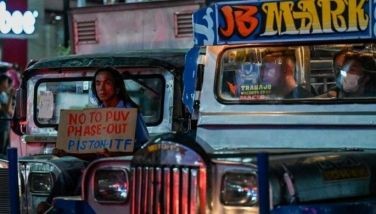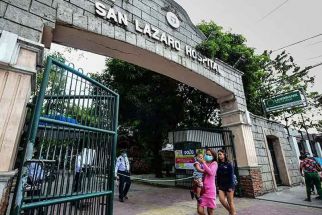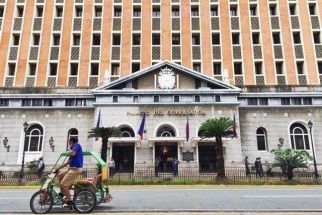DOH: BA.5 most dominant Omicron subvariant

MANILA, Philippines — The most dominant Omicron subvariant in several regions is now BA.5, the Department of Health (DOH) said yesterday.
“Based on our sequencing results, we can really see more of the BA.5 as compared to other variants,” DOH Undersecretary Maria Rosario Vergeire said in an online briefing.
However, Vergeire noted that “we cannot conclude for all because we know that our sequencing is quite limited.”
“That depends only on who submitted samples. Thus, it is not giving us a complete picture of the entire country,” she added.
Latest available data from the DOH showed there were 60 additional BA.5 cases detected in the country, 58 from Region 6 and one each from Region 11 and Region 12.
One individual is vaccinated while the vaccination status of the other 59 are still being verified.
Of the infected, 43 are now tagged as recovered, 14 are still in isolation while the rest are being verified.
The DOH also reported that 17 more BA.2.12.1 cases were detected – six from Region 6, 10 from Region 11 and one returning overseas Filipino. Two presented mild symptoms, one was asymptomatic while the status of the remaining 13 is still being verified.
Of these infections, 15 were tagged as recovered while the two are in isolation.
Data from the DOH also noted the detection of two additional BA.4 cases – one each from Region 11 and 12 – one fully vaccinated while the other is unvaccinated.
Both cases presented mild symptoms and have now recovered. At the moment, the exposure of these individuals is still unknown and travel histories are being verified.
So far, the country has recorded a total of 293 BA.5 cases, 87 BA.2.12.1 cases and 12 BA.4 cases.
“No matter what type of variant you have of COVID-19, and you are vaccinated and boosted, you can still get the infection because the promise of vaccination is not to block transmission of the disease but to protect us against severe and critical infections and, of course, protection from dying from these diseases,” Vergeire said.
‘Close to peaking’
The surge of new COVID-19 cases in the National Capital Region (NCR) may be close to reaching its peak, OCTA Research Group fellow Guido David said yesterday.
“The indicators show a slowing down of the growth rate in cases and there is a chance that cases in the NCR are peaking or have already peaked. The trends should be clearer after a week,” David said, noting that the region’s growth rate decelerated from 57 percent on July 4 to just 32 percent on Monday.
David earlier clarified that a positive growth rate means that the average number of new cases is still increasing. It will only decrease once the surge has reached its peak and the indicator is already negative.
According to OCTA, NCR had an average of 710 new cases per day from July 5 to 11, equivalent to an average daily attack rate of 4.93 new infections per 100,000 people. Health care utilization in the region is still at “low” 28 percent, while 20 percent of intensive care units for COVID-19 cases are occupied.
Warning
Those getting re-infected with COVID-19 should not be complacent, as it may take some two to three months before complications start to manifest, infectious diseases expert Dr. Rontgene Solante warned.
“The impact of this reinfection and breakthrough infections, it will not be felt at once. We will see the effects two to three months from now, those infected not because of COVID, but because of the long-term effect of COVID which will affect the heart, lungs and other vital organs,” Solante said in Monday’s episode of The Chiefs on One News.
“We have already seen a lot of data especially with reinfection, those getting more risks for long COVID and developing complications, and with breakthrough infections, there is also the possibility of more long COVID cases,” he added.
“Right now, we are getting, although in small numbers, we are getting people who are now required for high mechanical ventilation in some of the hospitals I’m affiliated with. We are not yet safe, and that is why we are seeing people on the ground, having severe COVID. Even if we say, there are now less cases compared to when Delta was dominant, which is expected. That severe form of COVID is not zero even with these new variants,” Solante stressed.
“It is high time for health experts and policy makers to really give a good look on how we can improve our vaccination, that is why I’m telling you, probably, the most important pathway, if there is no updated definition of the full vaccination, then let’s have it mandatory, especially for the general public to get the first booster,” he said.
The expert added that receiving booster shots is very important. “Yes, the symptoms now can be mild, because you had the primary series but then if you don’t want to get sick more, you better get the booster.”
Earlier, Solante called for booster shots to be made mandatory amid the continuing increase in COVID-19 infections and the higher positivity rates recorded in the past weeks.
Wall of immunity
The optional wearing of face masks will have to wait until such time that the country has achieved a stronger “wall of immunity,” Vergeire said yesterday.
Vergeire said they have already discussed the matter with experts and even with the Office of the President, specifically on making it optional when a person is outdoors.
“But there are conditions for us to reach that point wherein we can already afford to allow a little leniency on the wearing of face masks when people are outside or in open areas, and that is only when our ‘wall of immunity’ has been strengthened,” Vergeire said at virtual press briefing.
“So now, how do we improve that wall of immunity, that is by increasing the uptake of booster shots for the general population, that is when we can say that that the population is protected,” she added.
“There is a need to go back to that principle we advocate and that is population protection. When you say you have protected your population, you have protected the priority population which is the vulnerable and this is what we want to achieve in the coming months. When you say vulnerable, they are the ones most vulnerable to severe and critical infections of COVID-19, and these are our senior citizens, those with comorbidities, our healthcare workers and the youth sector,” the DOH spokesperson said.
Vergeire added that for this to happen, there is a need to intensify the uptake of boosters and that, according to experts, the target they’ve set is enough and most feasible until the time that we reached the 100 days of the current administration.
“This is also because we want that our efforts will have a high impact and positive effect for the country’s population,” she added.
The OCTA Research Group earlier said that the possibility of optional wearing of face masks in the country could happen once endemicity is reached and if COVID-19 metrics are in good shape.
No mandatory boosters
The DOH yesterday brushed off the idea of making the third vaccine or first booster dose against COVID-19 mandatory.
At a press briefing, Vergeire said they do not see the necessity yet of making booster shots mandatory for the public.
“There is a need for such a proposal to be studied carefully. At this point in time, we don’t see the need to adopt such a strategy,” Vergeire said.
She said previous vaccination strategies have been successful despite not being mandatory.
“We saw that it was effective for the primary series. Hopefully, we can do this again in the coming weeks for us to be able to improve our booster uptake,” she added, noting that there is no law in the country that permits mandatory vaccination.
For their part, senators yesterday prodded Filipinos to get booster shots for COVID-19 but bucked calls to make the follow-up jabs mandatory.
“While we have to respect the right of each Filipino to choose whether to get vaccinated or not, we should also provide them all the right information they need to make the right decision for their safety and the safety of their communities – especially now that science shows the need to get inoculated again with booster shots,” Sen. Bong Go said.
“What should be done is to continue public health education to convince those who have not been vaccinated to get those shots freely for their sake, their family and society,” Sen. Risa Hontiveros said in Filipino.
Sen. Loren Legarda strongly urged all those qualified and eligible, based on age and comorbidities, to avail of the booster shots “to ensure our health and that of our workforce and families.”
Sen. Aquilino Pimentel III was not too enthusiastic about the rollout of booster shots, which he warned was costing the country billions of pesos but is not effective against emerging variants.
Sen. Jinggoy Estrada, however, expressed support to make booster shots mandatory for the adult population, as vaccines have been proven to protect people against the worst effects of COVID infection.
Sen. Nancy Binay said she supports the experts’ recommendation for a third shot but “the DOH must be aggressive with those in the priority groups, intensifying vaccination in isolated and remote areas.” – Janvic Mateo, Paolo Romero, Cecille Suerte Felipe
- Latest
- Trending
















